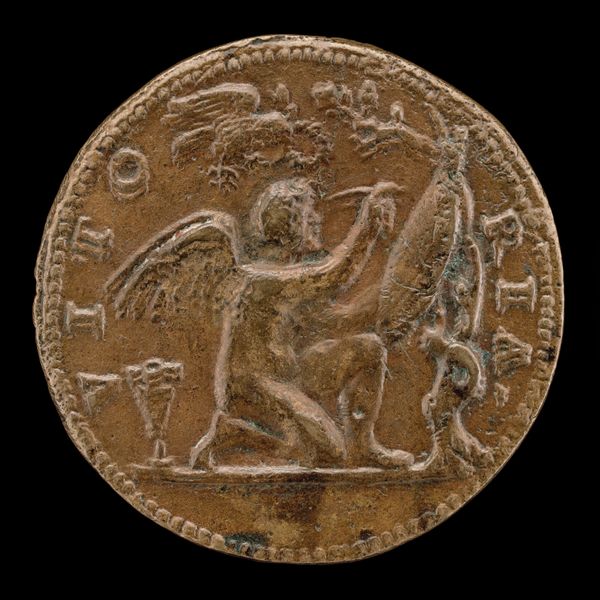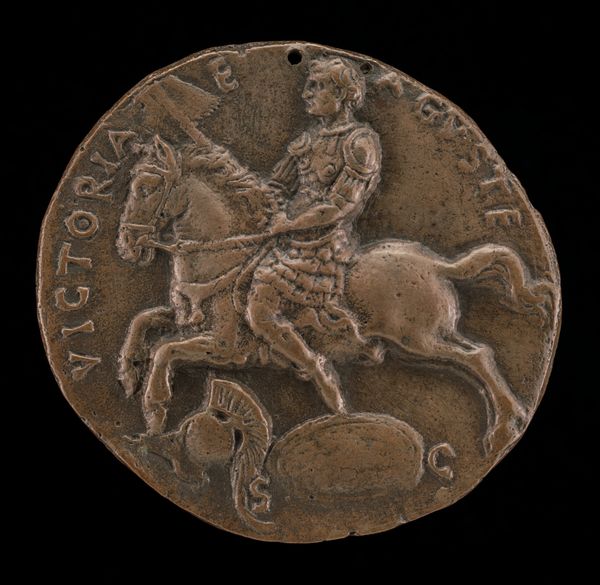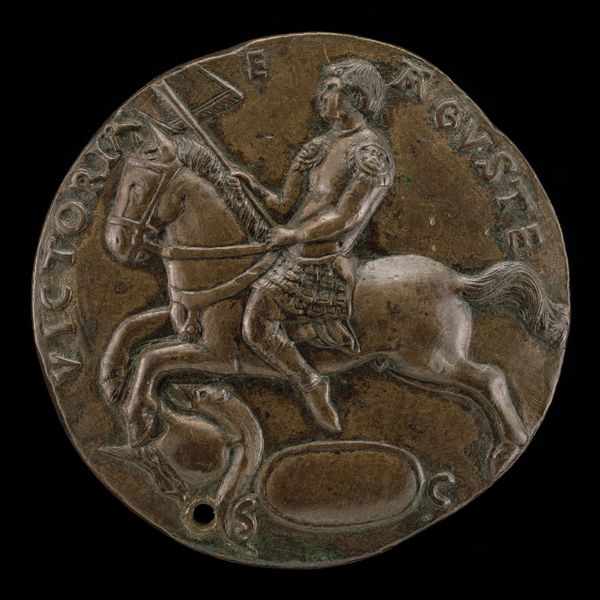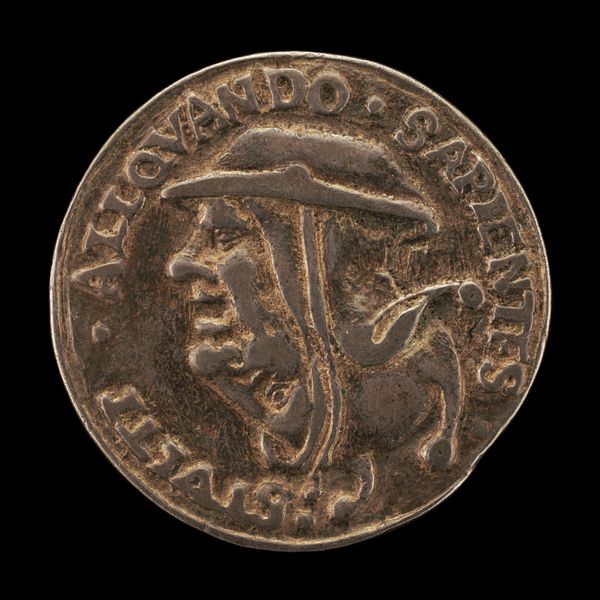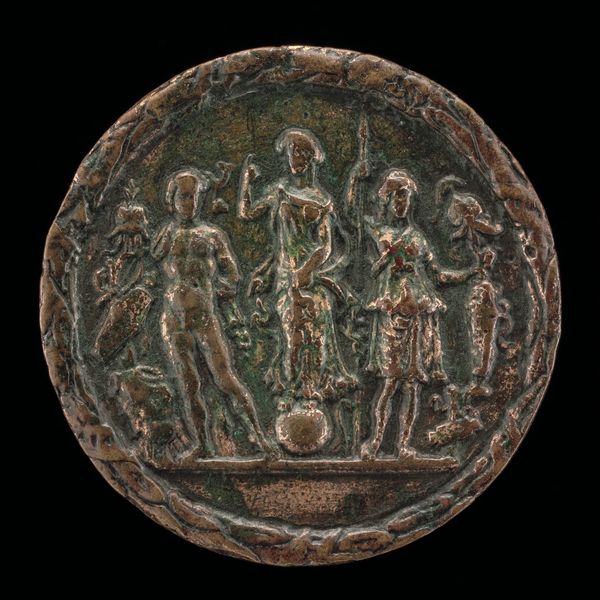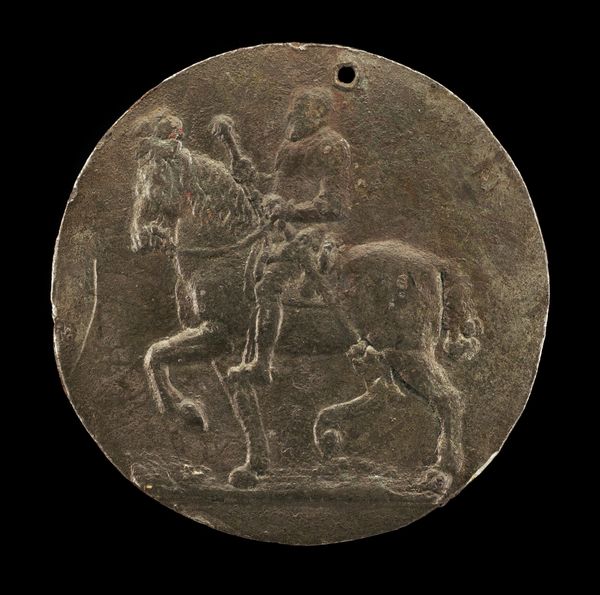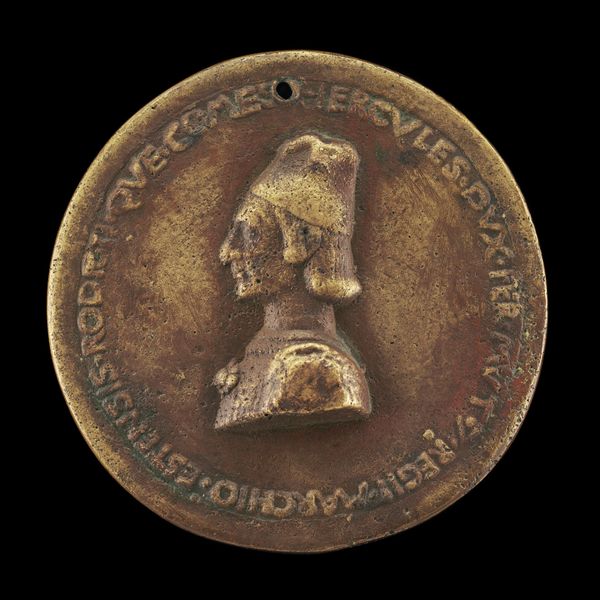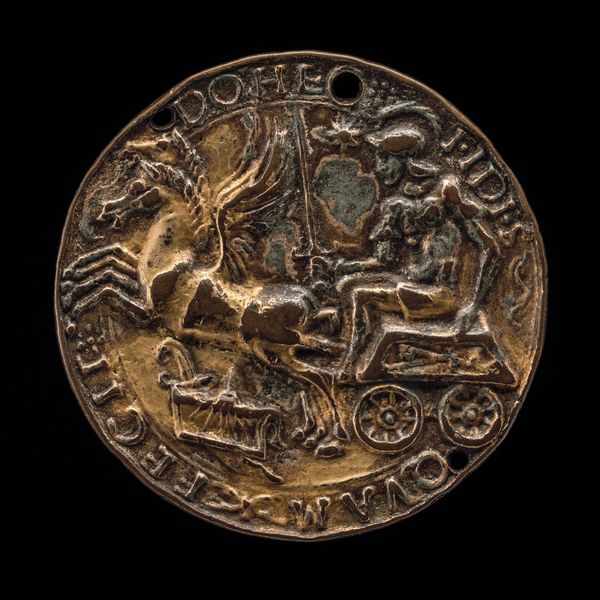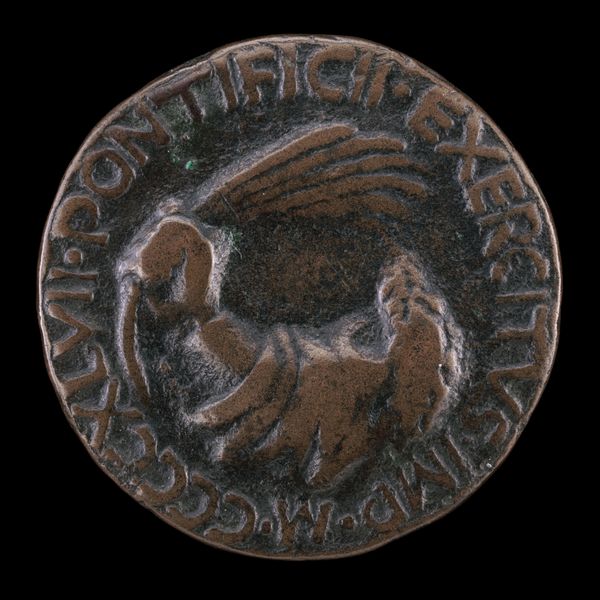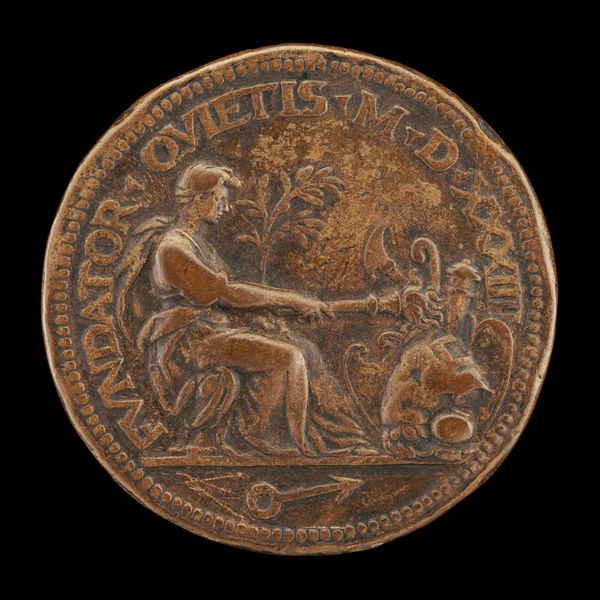![Ercole on Horseback [reverse] by Baldassare d'Este](/_next/image?url=https%3A%2F%2Fd2w8kbdekdi1gv.cloudfront.net%2FeyJidWNrZXQiOiAiYXJ0ZXJhLWltYWdlcy1idWNrZXQiLCAia2V5IjogImFydHdvcmtzLzJmYjg5YmMyLTczMGQtNDg3MS1iYTg3LTdlN2RmZDQwZTkwNC8yZmI4OWJjMi03MzBkLTQ4NzEtYmE4Ny03ZTdkZmQ0MGU5MDRfZnVsbC5qcGciLCAiZWRpdHMiOiB7InJlc2l6ZSI6IHsid2lkdGgiOiAxOTIwLCAiaGVpZ2h0IjogMTkyMCwgImZpdCI6ICJpbnNpZGUifX19&w=3840&q=75)
sculpture
medal
3d sculpting
stone
sculpture
detailed texture
ring
sculptural image
unrealistic statue
sculpting
sculpture
carved
statue
Dimensions: overall (diameter): 9.25 cm (3 5/8 in.) gross weight: 221.66 gr (0.489 lb.) axis: 12:00
Copyright: National Gallery of Art: CC0 1.0
Curator: Here we have a bronze medal created circa 1472 by Baldassare d'Este, titled “Ercole on Horseback [reverse]". Editor: It strikes me as a really interesting object; the scale surprises me—intimate, almost like a lucky coin or charm, yet the image it portrays is so grand. Curator: Indeed. The medal was likely commissioned to celebrate Ercole I d'Este, Duke of Ferrara, portraying him as a strong, classical ruler, much like the Roman emperors of antiquity. It’s not just a portrait; it's an assertion of power and legitimacy during his reign. Editor: The horse is central here; it really conveys authority. Throughout history, equestrian figures have served as powerful visual symbols of control and domination. Is there something particularly resonant about horses in this context? Curator: Certainly, the horse here is not simply a means of transport, but a carefully constructed representation. It is important to consider what it evokes at a moment of intense political negotiations among Dukes in northern Italy. The very medium, bronze, has classical links, making it a vehicle for portraying Ercole’s cultural associations. The medal's production in quantity also signals something about this. Editor: Mass production implies broader dissemination, an effort to circulate Ercole's image and, by extension, his authority among a wider audience. Even the lettering surrounding the image seems classical, solidifying those historical connections. Do you think the "reverse" is of any consequence? Curator: Absolutely. The other side of a portrait medal frequently included personal emblems, heraldic devices, or allegorical scenes that complemented the primary portrait and further reinforced the subject's identity and aspirations. I believe that without the reverse side, we only grasp part of the historical meaning. Editor: It certainly provides more depth when you examine not only the artistic intent but its function in the social framework of its time. Something as straightforward as a sculpted scene gains further resonance when you grasp how it was consumed, disseminated, and what it evoked in its intended audience. Curator: I agree, delving into an object like this makes us appreciate its symbolic density and function inside particular political settings and power dynamics. Editor: Precisely, I had the simple response that the piece held an equestrian authority in a miniature format. With just a little historical context we arrive at the medal operating almost as an early form of political propaganda.
Comments
No comments
Be the first to comment and join the conversation on the ultimate creative platform.

